Have you ever watched a YouTube video of someone sipping a smoothie on the beach and bragging about how they made $30,000 in one month with print on demand (POD) from their laptop?
Yeah, we've all seen it.
They tell you it's easy, passive, and just one $997 course away from quitting your job:
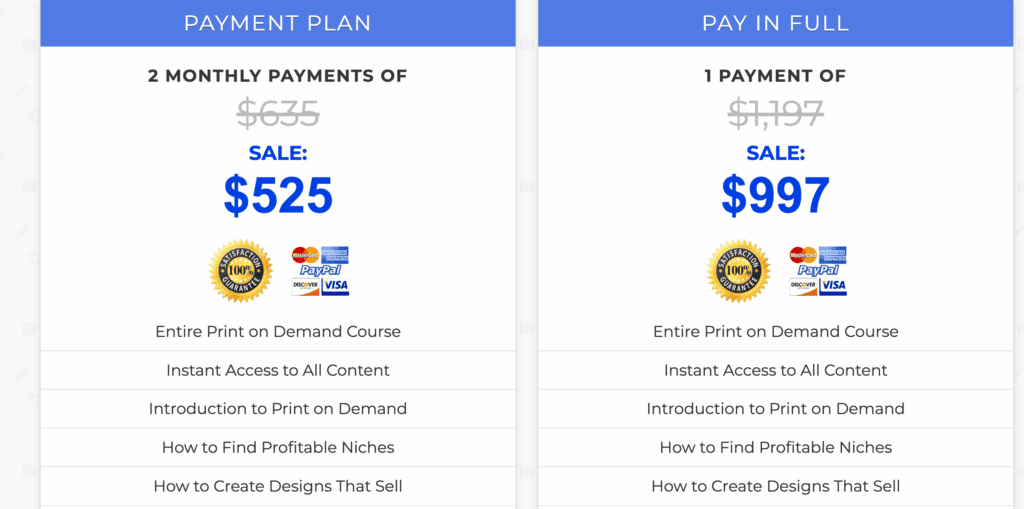
But POD is not magic. It's a real business that takes time, effort, learning, trial and error, and, most importantly, realistic expectations!
This article is for beginners wondering why their store isn't raking in cash, even after following all the steps from that free webinar.
We'll cover ten things most POD gurus won't tell you. Not because they forgot, but because these truths don't sell courses.
No $99-a-month secrets-just free, practical advice from people who actually run POD stores.
By the end, you might see those gurus (and your own store) a little differently.
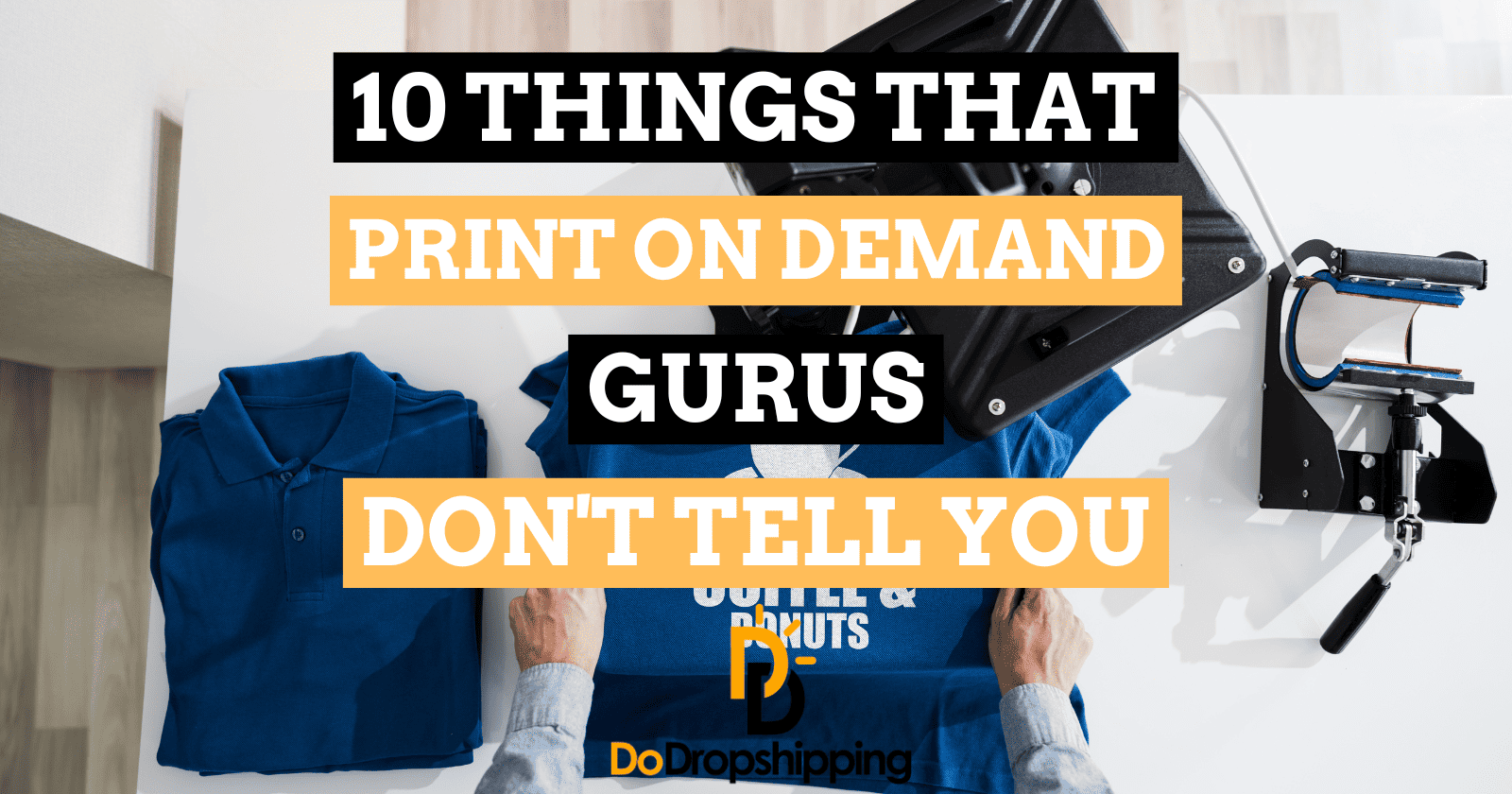
Launch your print on demand store on Shopify
Free 3-day trial + $1/month for 3 months
- Plug in leading POD apps in a few clicks
- Sync designs and mockups straight into your storefront
- Focus on designs while Shopify handles checkout & payments
No card to start. Cancel anytime.
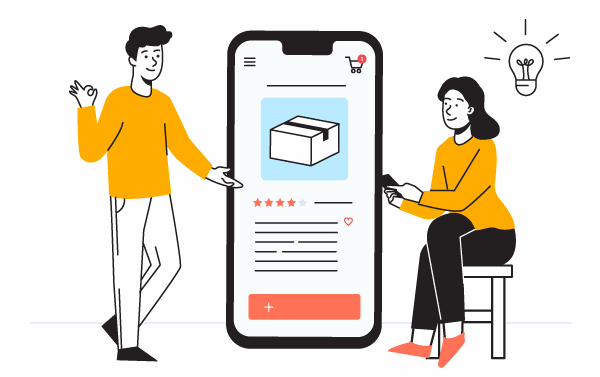
10 Things POD gurus don't tell you as a beginner
Let's start with one of the biggest misconceptions: what's real and what's not.
1. Those top-selling shirts might just be mockups

Ever scroll through Etsy and see a shirt with a 'Bestseller' tag and hundreds of likes, and wonder why everyone seems to be succeeding except you?
Here's the truth: some 'top sellers' haven't sold much at all, and some may not even exist.
Let's break it down.
Mockups ≠ sales
A lot of what you see on Etsy is mockups: designs digitally pasted onto stock photos of models.
You'll often notice the same model wearing dozens of designs across different stores.
Some of those designs have never been printed; they only get made if someone actually places an order. So, that 'bestseller' may never have left the screen.
Etsy badges can be misleading
That orange 'Bestseller' badge on Etsy? It simply means the product has recently sold faster than others in its category.
Sellers can manipulate this by temporarily slashing prices to drive a few quick sales.
The Thangs3D Blog explains that this is often a short-term strategy. Sellers may break even or lose money to get it, then raise the price once the badge appears.
So, you might be looking at a shirt that sold only 12 units but looks like a runaway success.
The real test is to order your own product
Gurus love showing perfect product photos. But behind the scenes, even experienced sellers have to order and tweak shirts multiple times to get them right.
Mockups won't show you if the print quality is bad, the placement is off, or the shirt fabric feels like cardboard.
Be cautious if a guru tells you to launch without holding your product. Good sellers test first.
2. Print on demand is a real business, not a shortcut
One of the biggest lies POD gurus sell is the passive income dream: upload a few designs, relax while the money rolls in, and maybe retire early.
It sounds amazing. Unfortunately, it's completely misleading.
It's not set-and-forget
Running a POD store is like running any other business, except without inventory.
You're still responsible for product research, keyword optimization, designs, listings, customer support, and marketing.
Platforms like Printful and Printify say this upfront: you drive the traffic and make the sales.
There's no magic button.
You probably won't get a sale on day one
Many beginners expect fast success because gurus act like it's normal: 'I made $3,000 in my first week! '
But they rarely mention the months of prep, failed stores, or ad spend behind the scenes.
In reality, it can take weeks or months to get that first sale.
You wear every hat
At the start, you'll be the designer, marketer, customer service rep, copywriter, and brand manager.
No POD app or platform does this for you. Yes, there's no inventory to manage, but the 'effort-free' narrative is fiction.
If you're serious, treat POD like a startup, not a side hustle.
3. Reviews for POD courses might not be as honest
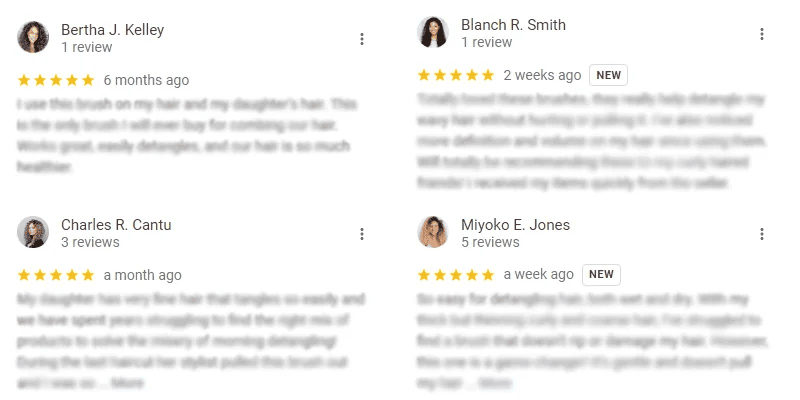
You've probably seen a sleek course landing page with dozens of five-star reviews, smiling students, and bold claims like 'Learn how I made $100k with POD in three months!'
Looks convincing, right? But those reviews aren't always what they seem.
Affiliates have a big incentive to hype it up
Many course reviews come from affiliates who earn a commission when you sign up using their link.
That glowing article about how excellent 'POD Masterclass 3.0' is? It probably includes an affiliate link at the bottom; the reviewer might make $200+ per sale.
They're not being objective. They're being rewarded.
Bad reviews don't make it to the sales page
Naturally, course pages show only success stories. You won't see comments like:
- 'Didn't learn anything I couldn't find on YouTube.'
- 'Mostly fluff. Not worth the money.'
- 'Design tips were outdated. Refund denied.'
These comments are all over Reddit but conveniently absent from course pages.
That's marketing, not transparency.
If it's so good, why are they selling it?
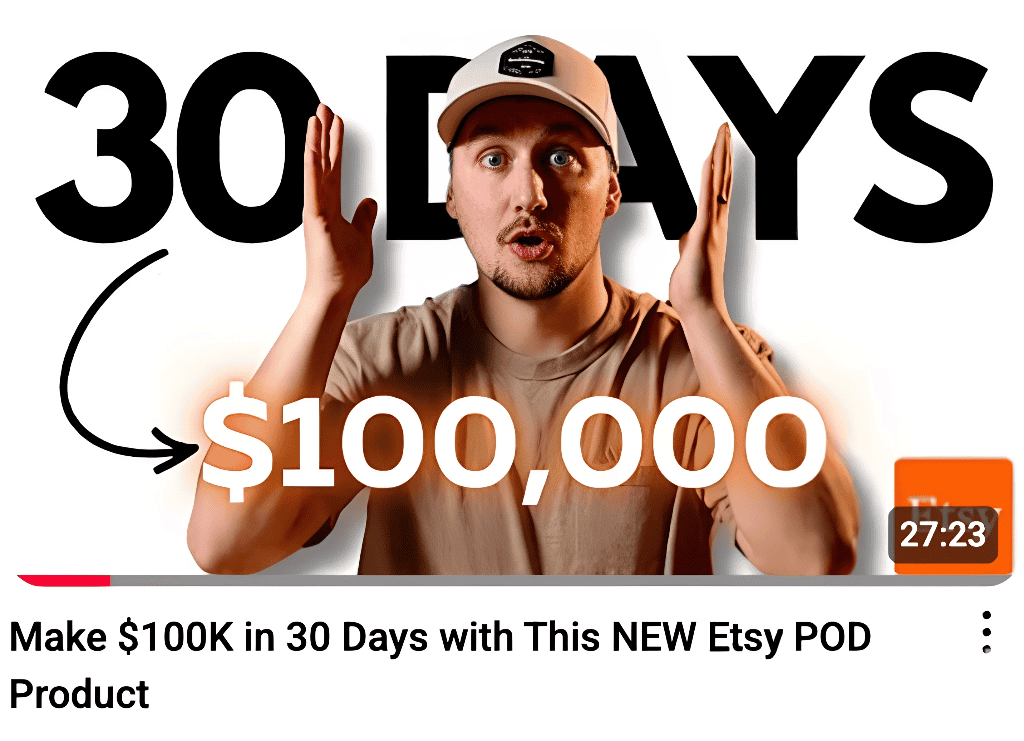
Here's a fair question: if the guru's POD strategy is so powerful, why are they spending time selling courses instead of running their store?
Spoiler: many aren't even active POD sellers anymore. Their real business is selling the dream.
Before you invest in any course, ask yourself:
- Is the instructor still running a POD store?
- Are the reviews independent or affiliate-backed?
- Is there real proof of long-term success?
Some legit teachers are out there, but they don't need flashy promises to earn your trust.
Do your homework before spending a dime.
4. Those sales screenshots don't show everything
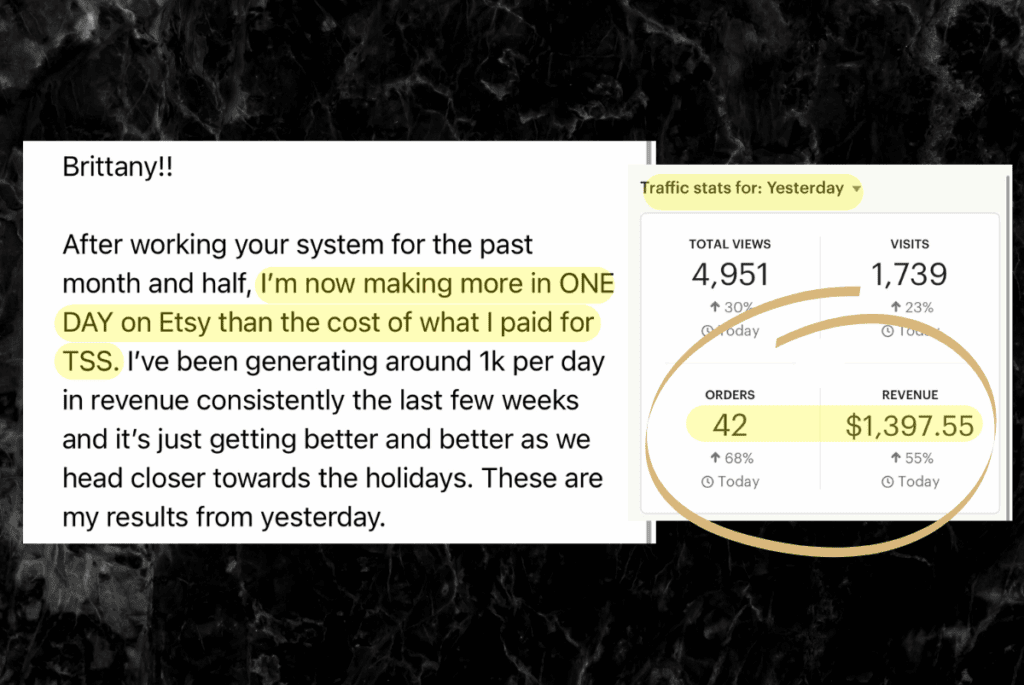
We've all seen gurus share screenshot of their Shopify dashboard showing $50,000 in monthly sales with the claim, 'You can do this too!
It's flashy. It's convincing. But also, it's misleading.
Revenue ≠ Profit
That $50K in sales doesn't include the $40K they spent on Facebook Ads, $6K paid to the print provider, and $2K lost to refunds and chargebacks.
What looks like massive income might just be break-even after expenses.
And that's assuming the screenshot is even real.
Fake screenshots are easy to make
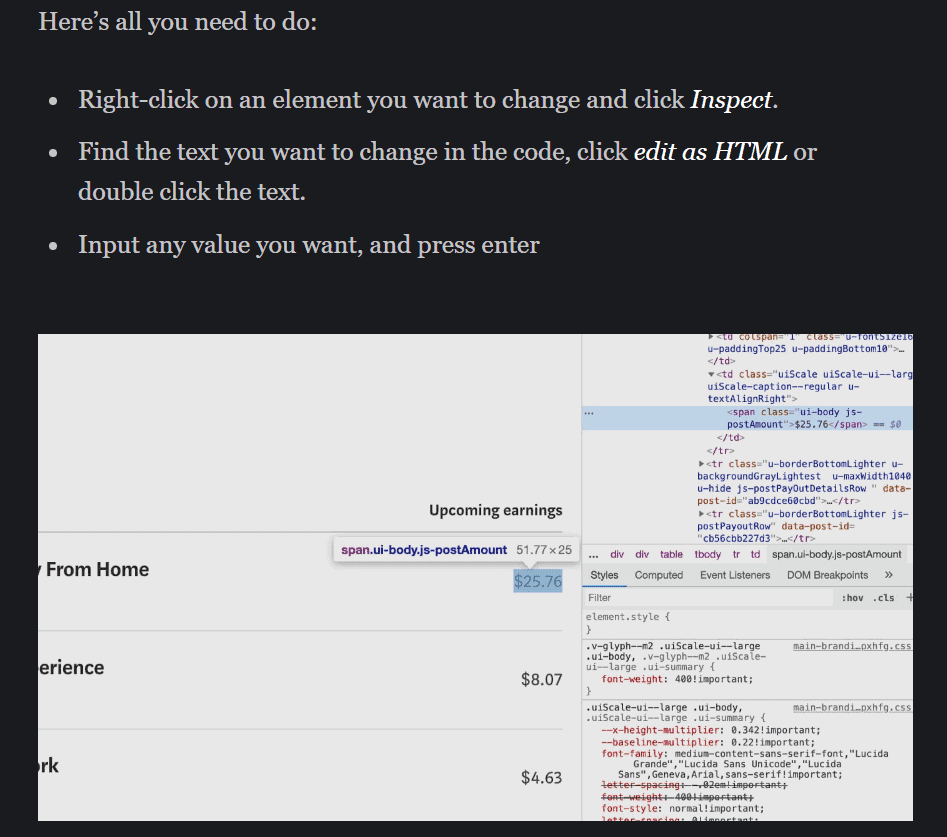
Some gurus don't even bother with real numbers!
They open their browser, right-click the sales dashboard, click 'Inspect,' and edit the HTML to display whatever number they want.
Scammers openly admit they do this, especially when trying to grow their brand or sell a course.
So, if a guru constantly flexes revenue but never mentions profit margins, ad spending, or taxes, take that as a red flag.
No one posts their losses
POD is full of ups and downs. Sales can spike during a holiday and crash the next month.
But gurus only show their highlight reel. They never show:
- The week they got zero sales.
- The month they spent $800 on ads and made $500.
- They had to refund 20 orders at the time due to print issues.
As MyWifeQuitHerJob's podcast says:
What they don't tell you is that the margins are pretty horrific.
Next time you see a '$100K Month' post, ask:
- How much did they spend to make that?
- Was it from one viral product or consistent sales?
- Are these numbers verified or just manipulated for clicks?
Please don't compare your behind-the-scenes to their curated reel!
5. You can learn almost everything for free
One of the biggest surprises for new POD sellers is that you don't need a $500 course to figure it out.
Most of what you need is already online, for free!
Many ways to learn POD
There are entire YouTube channels dedicated to print on demand, covering everything from creating designs in Canva to optimizing Etsy listings.
Reddit alone is packed with honest feedback from active sellers:
Many successful sellers say they learned more from free blog posts than paid courses.
There is no 'secret formula'
Many beginners assume courses have some insider trick, like a magic ad or keyword strategy.
But there isn't one.
If a tactic really worked, it would quickly spread across Reddit and Facebook groups. By the time it's wrapped into a course and sold, it's often outdated or oversaturated.
Learning for free builds better habits
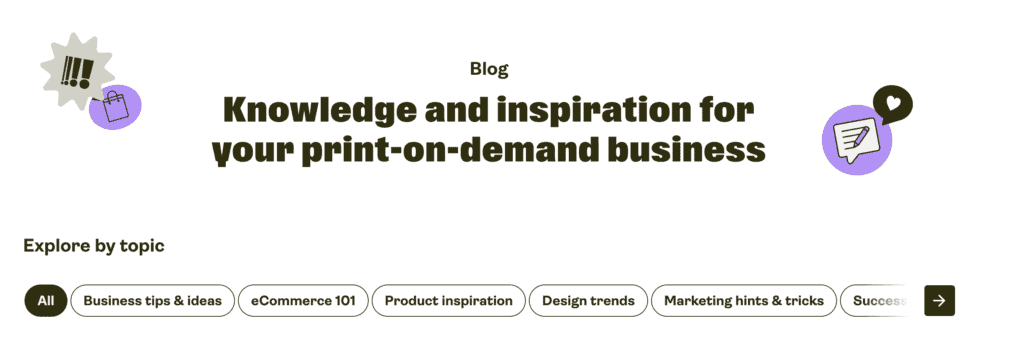
Learning through blogs, videos, and trial-and-error builds fundamental skills and critical thinking.
That's not the same as blindly copying one person's method. You understand why it works, when to adapt, and how to troubleshoot issues.
Free education also gives you room to fail and grow without losing money on a hype course.
6. You will make mistakes, and that's a good thing
Most POD gurus love to show you polished wins:
- 'Look at this viral shirt I sold!'
- 'Here's my $20k month!'
What do they rarely show you? The mess before the win.
Because here's the truth: you will make mistakes, and you should!
Mistakes are how you learn
Think about it, how do you get better at anything? You try, mess up, adjust, and try again.
One Reddit seller said it perfectly:
It could take months to get your first sale so if you're not looking to stay in this for the long term don't do it.
That's not failure, that's progress.
Gurus don't like talking about their mistakes, but behind every 'winning store' is a trail of failed ideas, typos, wrong niches, and bad samples.
Mistakes are real-world lessons
Choose the wrong shirt color? You won't forget.
Use the wrong keyword and get no views? You'll understand SEO better next time.
Have to refund a customer? You'll check your files more carefully.
These lessons stick because they're earned through real experience, and they'll make you better, faster.
You're not failing, you're learning
It's easy to feel discouraged when something flops.
But that doesn't mean you're bad at POD. It means you're doing the work.
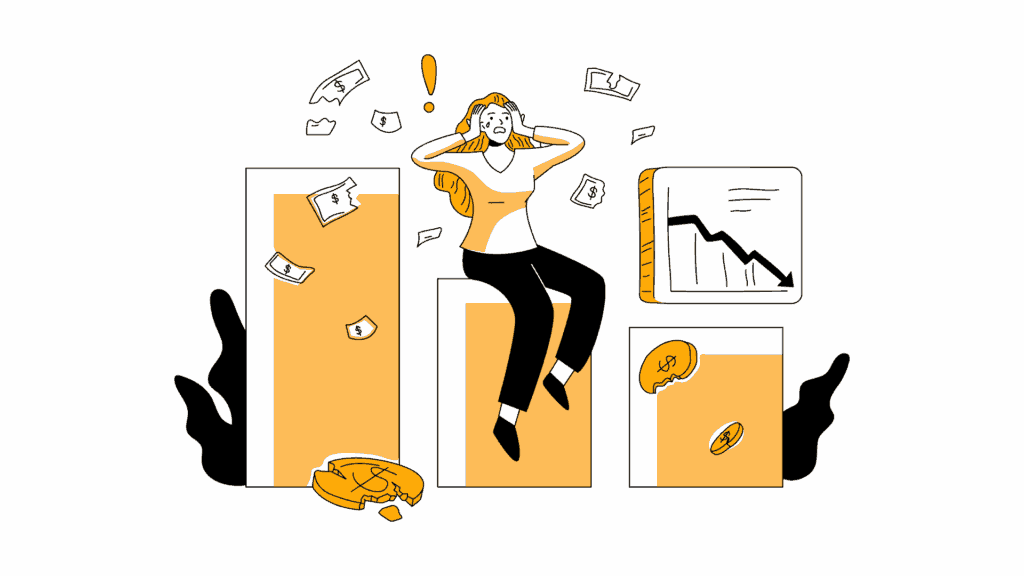
A Neil Gaiman quote (yes, really!) sums it up:
If you are making mistakes, then you are making new things… you're doing something.
You get good by pushing through failure, not avoiding it.
7. Customer service is still your job
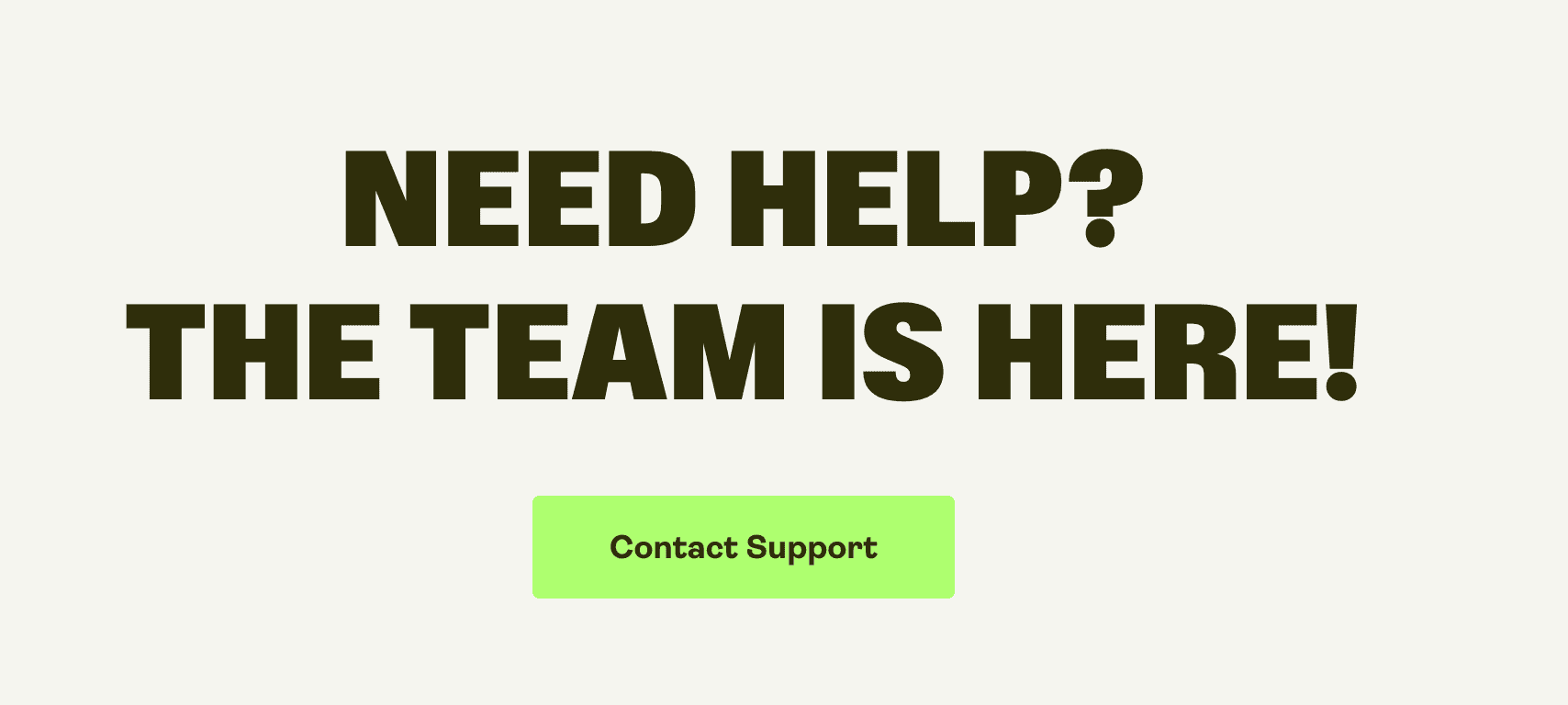
One of the biggest myths about POD is that it's hands-off.
Yes, you don't have to ship or print the product, but customers message you when they have a problem.
And guess what? You're the one who has to fix it!
The print company is invisible to the customer
Your buyer doesn't care whether their order came from Printful, Printify, or a local printer. To them, you're the store.
If a print is blurry or a mug arrives broken, you get the email, and it's your job to fix it quickly and professionally.
There's no escaping the inbox
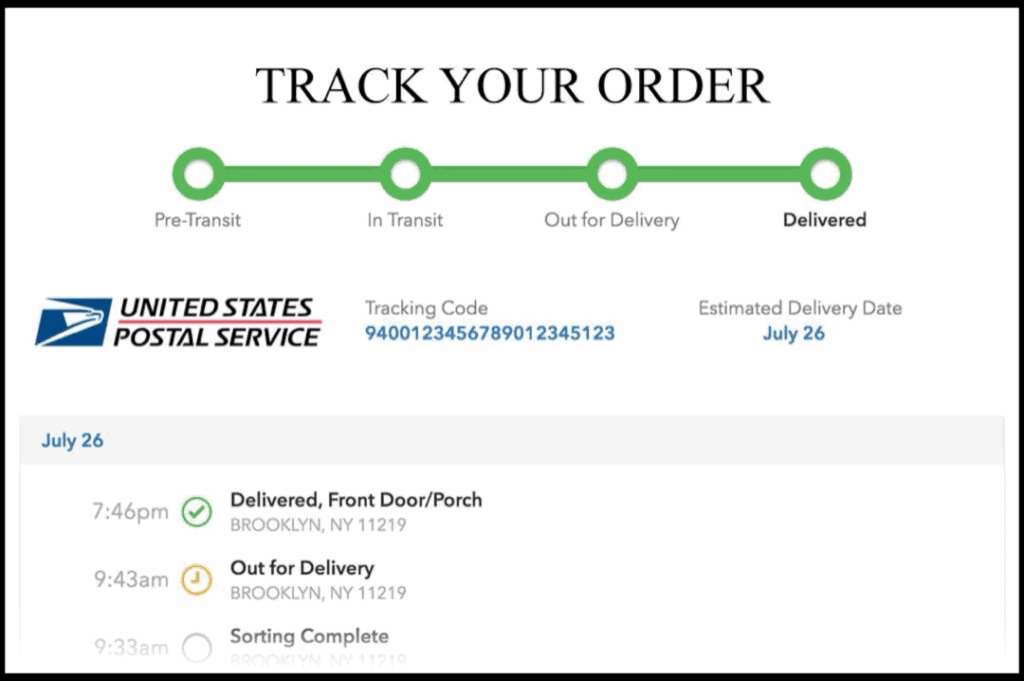
Especially on Etsy or Shopify, you're fully responsible for:
- Responding to 'Where's my order?' messages
- Apologizing when a shipment is late
- Explaining return and refund policies (which often depend on your print provider)
Ignore these, and you'll rack up bad reviews and chargebacks fast.
Even Printful says:
At its core, it all comes down to being empathetic to your buyers at every point in the customer journey.
Sometimes you have to eat the cost
Sometimes your provider messes up. Sometimes the postal service does. And sometimes the customer is just upset.
But maintaining your reputation may mean offering a refund or reprint, even if it costs you.
Think of it this way: Would you rather lose $15 or get a 1-star review that tanks your shop?
Gurus don't mention this because it's not glamorous. But anyone who's built a successful POD store has had to deal with it.
8. Quality and shipping speed can vary a lot

Gurus love to say: 'Just connect to Printful or Printify, and you're good to go!'
What they don't mention is that quality and shipping speed can vary, sometimes dramatically.
Not all POD suppliers are equal
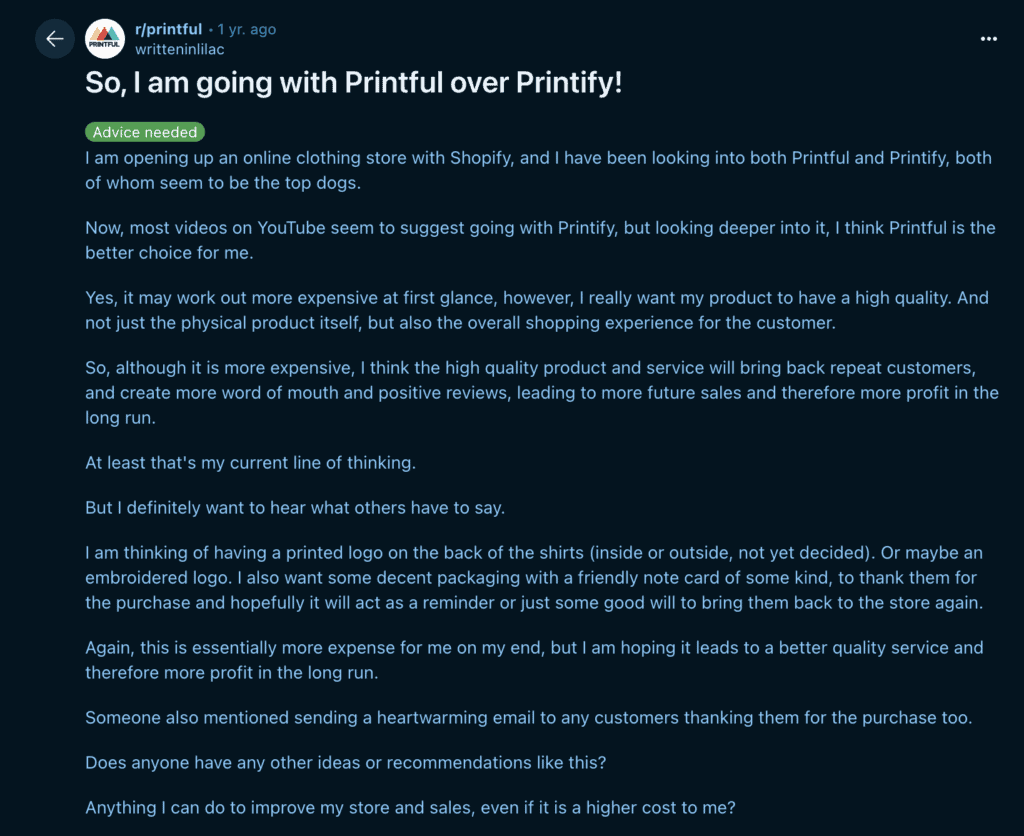
Even within the same platform (like Printify), print quality can depend on which third-party print provider fulfills your order.
That's right. Printify is a network of different companies. Some are great and some are not so much.
As one Reddit user explained:
“One provider's prints started peeling after a few washes, while another's were still perfect.”
Another seller shared how one printer offered instant refunds, while another made them 'fight for every refund.'
These are details you won't see on a guru's course page.
Shipping times can be a rollercoaster
Sometimes an order arrives in three days. Other times it takes three weeks, especially during holiday rushes.
Even a single order might arrive in parts, with some items still 'in production.'
Customers won't care why there's a delay - they'll blame your store and leave bad reviews.
Test your suppliers
The only way to know which provider works best is to order samples yourself.
Compare print quality, shipping times, and how products hold up after washing.
The POD community on Reddit constantly reminds new sellers:
“Test before scaling. Don't trust the default.”
Top sellers often use multiple print providers, each for a different product or region.
9. Your first idea probably won't work, and why that's ok
This one's hard to hear, but it might save you months of frustration: Your first POD idea probably won't work.
Not because you're not smart or creative - it's just how this business works.
Most first designs flop
Beginners upload their first few designs, expecting sales to roll in. When nothing happens, they think, 'Maybe this just isn't for me.'
But guess what? Even top Etsy sellers with tens of thousands of sales had duds initially.
As one seller shared on Threads:
“Your first design will be terrible. Your first listing won't be perfect. You'll make mistakes (trust me).”
The goal isn't to succeed on the first try. The goal is to keep improving.
Don't fall in love with one idea
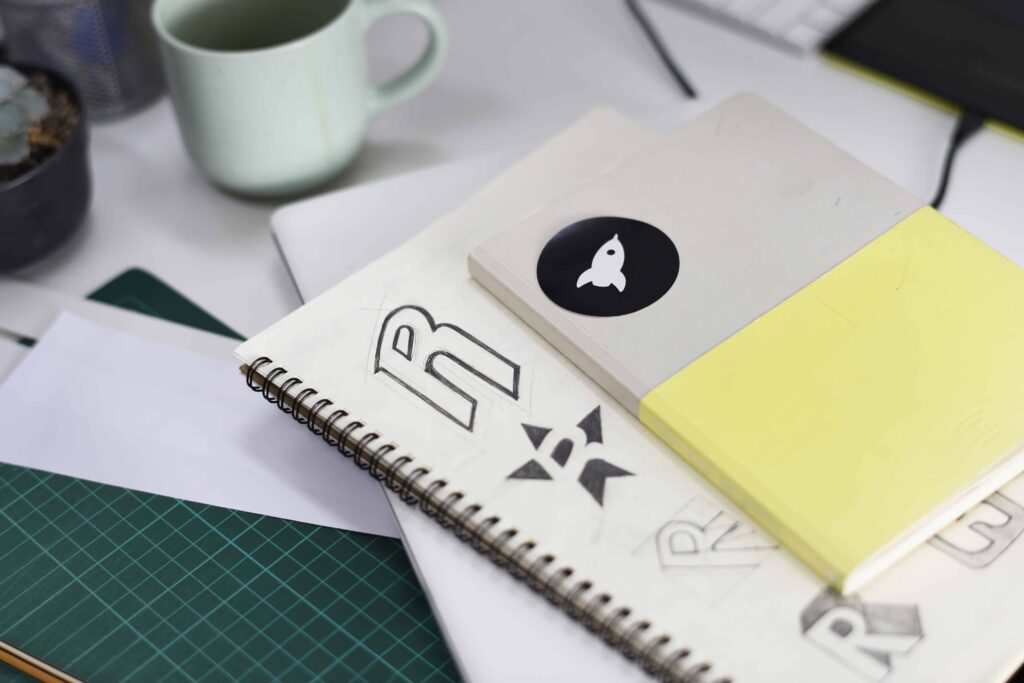
A common beginner mistake is falling in love with a design or niche and clinging to it even when it doesn't sell.
Sometimes, the niche is too crowded, the design doesn't connect, or the market just isn't there.
The solution? Pivot. Test something else.
The people who win at POD try different angles until they find what sticks.
Many successful sellers have graveyards of failed products and even entire stores that went nowhere. It's all part of the journey.
Every 'failure' sharpens your skills
Every flop teaches you something valuable:
- A failed listing improves your copywriting.
- An ad that bombed refines your targeting.
- A design that didn't sell helps you improve your color and font choices.
These lessons make you better. The key is to keep going.
10. Trends change fast, and you need to keep up

One of the most overlooked truths in POD: What worked yesterday might flop today.
Trend lifespans are short
Design trends, memes, and niches move fast.
If you're following what a guru did two years ago, you might already be late.
Let's say someone made a killing in 2022 selling shirts with gothic fonts and sarcastic quotes. They package that success into a course in 2023. You buy it in 2025.
Problem? The trend's dead. The market is flooded. Buyers have moved on.
This is what the Merchize market analysis called 'trend lag.'
When a tactic hits a YouTube tutorial or course, the niche is often saturated or out of style.
Pop culture heavily influences POD
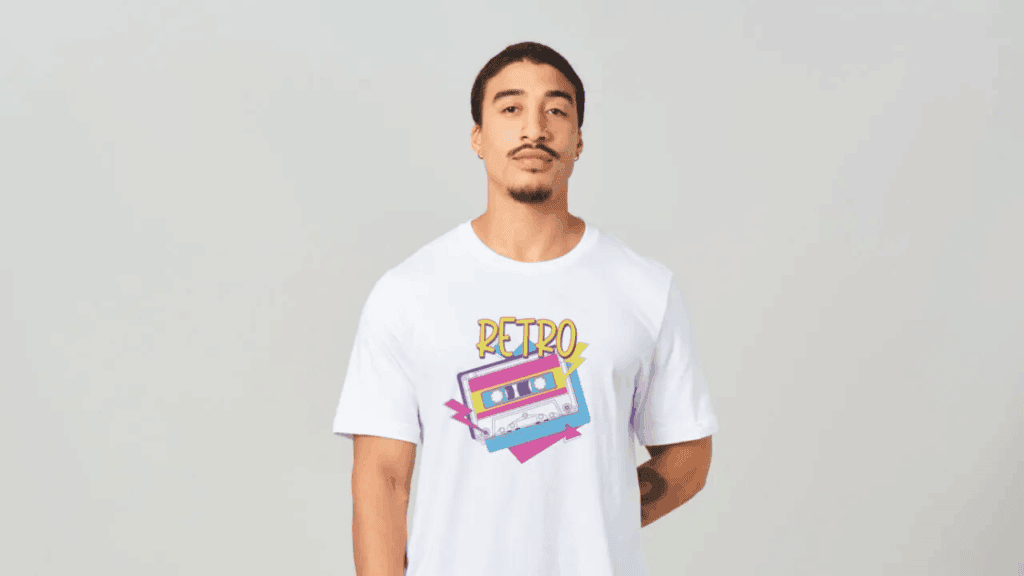
TikTok trends, memes, and news events shape what sells. And they change fast!
One month, it's a trending quote from a show, the next, a viral animal meme. A week later, it's all old news.
Sellers who jump early on a trend can do well. But you're always playing catch-up if you rely on a guru to feed you trends.
Innovation beats imitation
Gurus often teach you to copy what worked for them, but the sellers who succeed today are the ones trying new angles.
This could mean:
- Using new fonts or color combos
- Pairing two niches (i.e., 'Introvert dads who love birds')
- Testing different products (mugs, posters, etc.)
As Merchize put it:
Instead of following the crowd, you need to create truly unique products and services that are tailored to your customer's needs and desires.
You don't have to reinvent the wheel, but you need to bring something fresh to the table.
Why Do Dropshipping and not these POD gurus?
Everything you're reading here is 100% free.
There are no upsells, fake countdown timers, or secret $497 course waiting at the bottom of the page.
Just clear information from someone tired of seeing beginners misled by overpriced 'blueprints' that could be summarized in a seven-minute YouTube video.
You won't see any Ferraris or rented mansions here, and you won't see a promise of $10,000 a month from uploading your first three shirt designs, either.
Because that's not how this works, and deep down, you probably know that already.
Do Dropshipping exists for one simple reason: to give you everything you need to get started without gatekeeping or fluff.
This site was built to help you learn the real steps to starting and running an online store, whether you're into dropshipping, print on demand, or just figuring it all out.
And yep, there are guides here for tools, products, research, platforms, and more! They are all written with one goal of helping you succeed without getting scammed.
So why Do Dropshipping instead of a guru?
Because here, the only thing being sold is the truth.

Turn this guide into an AI checklist
Click your favorite AI tool below to get a short summary and step-by-step checklist based on this article.Prefer ChatGPT? Open this guide in ChatGPT with a pre-filled prompt (most readers start here).
Summary
Before we go, we've created a quick summary of this article for you so you can easily remember it:
- Order samples of your products before launch to confirm quality, fit, and fabric feel.
- Treat your print on demand store like a serious business with daily tasks and planning.
- Research every course or guru carefully; check for real-world experience and unbiased reviews.
- Track profit after costs like ads, fees, and refunds. Not just revenue numbers.
- Use free resources like YouTube, Reddit, and blogs (like this one!) to build skills before spending money.
- Test multiple designs early; use failures to improve and better understand your market.
Conclusion
Now you know what most gurus won't tell you.
POD isn't passive, instant, or guaranteed. It's a real business.
You'll mess up, learn a lot, and get better each time.
Skip the $500 course. Use what's free. Test things. Stay consistent. And don't quit when it gets tough.
If you're ready to build something real, not just chase fake screenshots, you're in the right place.
Thank you for reading!
Want to learn more about POD?
Ready to move your print on demand store to the next level? Check out the articles below:
- How to Scale Your Print on Demand Business in 2025
- Print on Demand Pricing Strategy: The Definitive Guide (2025)
- 10 Print on Demand Marketing Strategy Tips (Grow Your Store)
Plus, don't forget to check out our in-depth how to start a print on demand business guide here!











